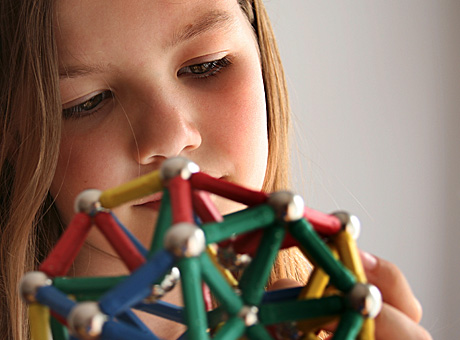
Pediatric brain injury
New program saves lives, reduces disabilities

Children with traumatic brain injuries are more likely to survive and avoid long-term disabilities when treated aggressively as part of a designated neurocritical care program that brings together neurologists, neurosurgeons, trauma and other critical care specialists, according to a new study at Washington University School of Medicine.
The investigators tracked the results of such a program at St. Louis Children’s Hospital. They studied the outcome of 123 cases before and after the hospital launched a pediatric neurocritical care program (PNCP) in September 2005.
“We were amazed by the results,” says Jose A. Pineda, MD, associate professor of pediatrics and neurology, and director of the program at St. Louis Children’s. “We analyzed the data rigorously, and we found that our new program of care resulted in a striking improvement in outcome for children with severe traumatic brain injury. Mortality for these children was dramatically reduced, and we also noted a meaningful improvement in outcomes for survivors. We know that children who suffer traumatic brain injuries have long lives ahead and must reintegrate into society and be independent. That’s where we set the bar.”
The study is the first to show the benefits of a pediatric neurocritical care program and an aggressive approach to treating brain injuries in children.
The findings are available online in the journal The Lancet Neurology. The study was led by Pineda, neurosurgeon Jeffrey R. Leonard, MD, and
pediatric intensivist Allan Doctor, MD, chief of pediatric critical care at St. Louis Children’s.
The program’s aggressive approach to treating head injuries suffered in car, bicycle, sports-related and other such accidents targets secondary damage, especially damage provoked by dangerous increases in intracranial pressure.
Now that there is proof that PNCPs do make a significant difference, Pineda and his fellow researchers have two key goals: to sustain the outcomes they’ve seen since the program was created at St. Louis Children’s, and to spur other institutions to implement their own such programs.
Pineda credits the success of the program in large part to a close relationship with colleagues in neurosurgery, neurology, trauma surgery and radiology and other team members.
“We developed this collaborative, highly choreographed clinical pathway after first forging a partnership in caring for individual cases together,” says Pineda. “It’s incredibly rewarding to see synergy emerge after bringing our teams together to form the PNCP.”






